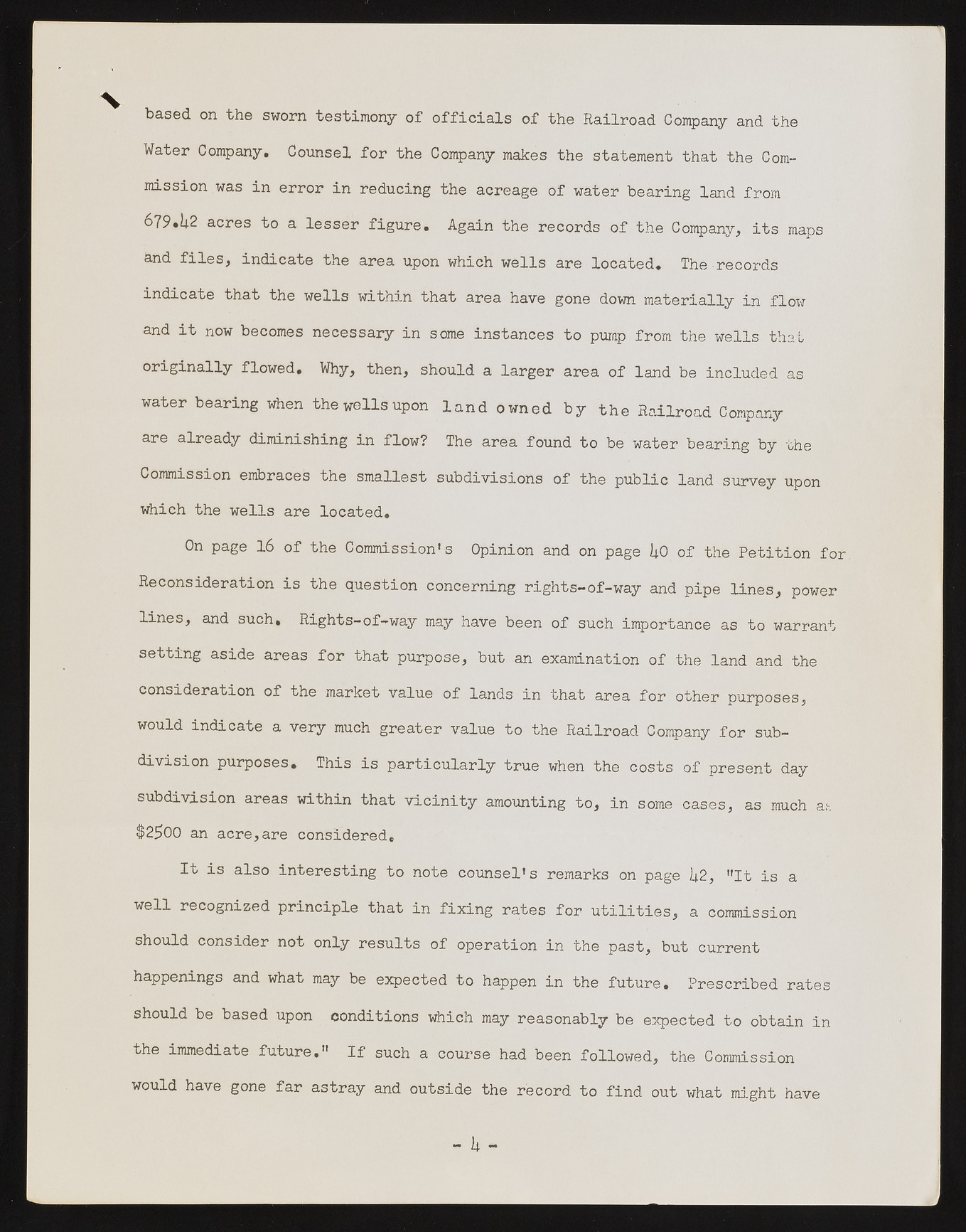Copyright & Fair-use Agreement
UNLV Special Collections provides copies of materials to facilitate private study, scholarship, or research. Material not in the public domain may be used according to fair use of copyrighted materials as defined by copyright law. Please cite us.
Please note that UNLV may not own the copyright to these materials and cannot provide permission to publish or distribute materials when UNLV is not the copyright holder. The user is solely responsible for determining the copyright status of materials and obtaining permission to use material from the copyright holder and for determining whether any permissions relating to any other rights are necessary for the intended use, and for obtaining all required permissions beyond that allowed by fair use.
Read more about our reproduction and use policy.
I agree.Information
Digital ID
Permalink
Details
More Info
Rights
Digital Provenance
Publisher
Transcription
V based on the sworn testimony of officials of the Railroad Company and the Water Company. Counsel for the Company makes the statement that the Commission was in error in reducing the acreage of water bearing land from acres to a lesser figure. Again the records of the Company, its maps hnd files, indicate the area upon which wells are located. The records indicate that the wells within that area have gone down materially in flow and it now becomes necessary in some instances to pump from the wells that originally flowed. Why, then, should a larger area of land be included as water bearing when the wells upon land owned by the Railroad Company are already diminishing in flow? The area found to be water bearing by the Commission embraces the smallest subdivisions of the public land survey upon which the wells are located. On page 16 of the Commission's Opinion and on page i;0 of the Petition for Reconsideration is the question concerning rights-of-way and pipe lines, power lines, and such. Rights-of-way may have been of such importance as to warrant setting aside areas for that purpose, but an examination of the land and the consideration of the market value of lands in that area for other purposes, would indicate a very much greater value to the Railroad Company for subdivision purposes. This is particularly true when the costs of present day subdivision areas within that vicinity amounting to, in some cases, as much a,*-. $2$ 0 0 an acre,are considered. It is also interesting to note counsel's remarks on page lj.2, "It is a well recognized principle that in fixing rates for utilities, a commission should consider not only results of operation in the past, but current happenings and what may be expected to happen in the future. Prescribed rates should be based upon conditions which may reasonably be expected to obtain in the immediate future," If such a course had been followed, the Commission would have gone far astray and outside the record to find out what might have - h ”

